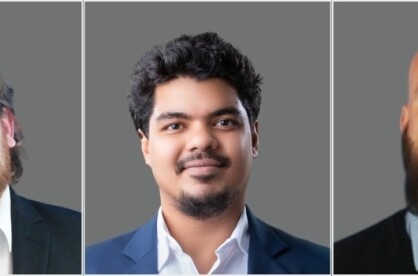Since the 1980s, income and wealth inequalities have been on the rise across almost all countries, fuelled by an array of deregulation and liberalisation programmes. This has resulted in a disproportionate growth of income and wealth between the haves and the have-nots. While some countries have experienced phenomenal increases in inequality, such as in the case of the US, Russia and India, other countries, such as those in Europe and China, have experienced relatively smaller increases in the divide.
The World Inequality Report is the most comprehensive account available of global trends in inequality and presents the most up-to-date synthesis of international research efforts to track global inequalities — it represents the work of more than 100 researchers over four years, located across all continents, all contributing to the World Inequality Database (WID.world), maintained by the World Inequality Lab.
Key findings for 2022
1. Contemporary income and wealth inequalities are very large
- While on average, in 2021 an individual earned about USD102,600 per year, this figure largely varied between and within each country. The richest 10 percent of the global population currently takes 52 percent of global income, whereas the poorest half of the population earns just 8.5 percent.
- Global wealth inequalities are even more prominent than income inequalities. The poorest half of the global population barely owns any wealth at all, possessing just 2 percent in total. In contrast, the richest 10 percent of the global population own 76 percent of all wealth.
- The inequality gap is smallest in Europe while it is the widest in the Middle East and North Africa (MENA) region. In Europe, the top 10 percent of earners take in 36 percent of the income share, whereas in MENA it’s a staggering 58 percent.
2. Inequalities increased significantly within countries
- The gap between the average incomes of the top 10 precent and the bottom 50 precent of individuals within countries has almost doubled — what used to be a factor of 8.5 times has now increased to 15 times
- This sharp rise in within country inequalities has meant that despite economic catch-up and strong growth in the emerging countries, the world remains particularly unequal today
- Global inequalities therefore seem to be about as great today as they were at the peak of Western imperialism in the early 20th century.
3. Inequality not well explained by geographic or average income differences
- Regional inequality levels mask significant variations in inequality between countries within regions, demonstrating that inequality levels are not determined by geography or development levels
- For example, in Africa, income gaps vary from 13 to 15 percent in Nigeria, Ethiopia, Guinea and Mali, while in the Central African Republic, Namibia, Zambia and South Africa the differences vary between 40 and 63 percent.
4. Over 40 years, nations became richer; governments becoming poorer
- The share of wealth held by public actors is close to zero or negative in rich countries, meaning that the totality of wealth is in private hands
- This trend has been magnified by the COVID-19 crisis, during which governments borrowed the equivalent of 10-20 precent of GDP, essentially from the private sector.
- Current low wealth of governments has significant implications for states to take on inequality in the future.
5. Rise in private wealth has also been unequal within countries
- Global multimillionaires have captured a disproportionate share of global wealth growth over the past several decades; the top one precent took 38 precent of all additional wealth accumulated since the mid-1990s, whereas the bottom 50 precent captured just two precent.
- The wealth of the richest individuals on earth has grown at 6 to 9 precent per year since 1995, whereas average wealth has grown at 3.2 precent per year
- Since 1995, the share of global wealth possessed by billionaires has risen from one precent to over three precent. This increase was aggravated during the COVID pandemic; 2020 marked the steepest increase in global billionaires’ share of wealth on record
6. Gender inequalities remain considerable and progress remains slow
- Women’s share of total incomes from work (labor income) neared 30 precent in 1990 and in 2021 it stands at less than 35 precent
- Progress has been very slow at the global level, and dynamics have been different across countries, with some recording progress while others are seeing a reduction in women’s share of earning
7. Redistributing wealth to invest in the future
- The report presented an online simulation on the preferred progressive wealth tax on global multimillionaires; given the large volume of wealth concentration, modest progressive taxes can generate significant revenues for governments and the simulation also showed that 1.6 precent of global incomes could be generated and reinvested in education, health and the ecological transition.
- The rise of modern welfare states in the 20th century was associated with tremendous progress in health, education, and opportunities; this was due to the rise of steep progressive taxation rates.
- Recent developments in international taxation show that progress towards fairer economic policies is indeed possible at the global level as well as within countries
Inequality and the Maldives
Among the Sustainable Development Goals in Maldives, two of the goals pertain to the eradication of poverty and reducing inequality. In 2018, The World Bank published a report titled Poverty and Inequality in the Maldives. Some of the key findings from this report include:
1. Poverty
Poverty is unequally distributed across the Maldives with higher poverty rates in the Atolls outside of Malé. Poverty rates increase steadily with household size; while only three precent of households with one to four household members live below the high poverty line, 12.6 precent of households with nine or more members are poor. Poverty also rises with increasing dependency; children under the age of 14
2. Inequality
Welfare is unevenly distributed in the Maldives. While the intensity of poverty is high, particularly for the high poverty line, inequality is also relatively high.
3. Demographic factors affecting poverty and inequality
Education
Lack of education is an important correlate of poverty - approximately 64 precent of the population belong to households where the head of household has below primary or only primary education. These households account for about 80 precent of the poor
Employment
There is a lack of a strong link between employment status and poverty rates which likely reflects the lack of productive employment opportunities for household heads.
Type of employment
Poverty varies by the type of employment that household heads are engaged in with more vulnerable types of employment showing higher poverty rates.
Sector of employment
Another strong correlate of poverty is the sector of employment of the household head. Maldivians living in households whose head works in fisheries, are poorer than those living in households whose head works in industry or services.
Gender Differences
About 39 precent of Maldivian households are female headed and poverty rates of female-headed households are slightly higher than for male-headed households.
Compared to 30 years ago, income inequality has risen in a staggering number of countries. It is clear that inequality is a serious threat to social and political stability. Inequality jeopardizes the achievement of the overarching economic goals proposed by the Open Working Group (OWG) of the General Assembly on Sustainable Development Goals. Therefore, this is not a matter of fate or chance and but one which can be reversed through policies and reforms. While solutions rest with national and regional policy makers, collective actions and measures at the international level also have a crucial role to play.





